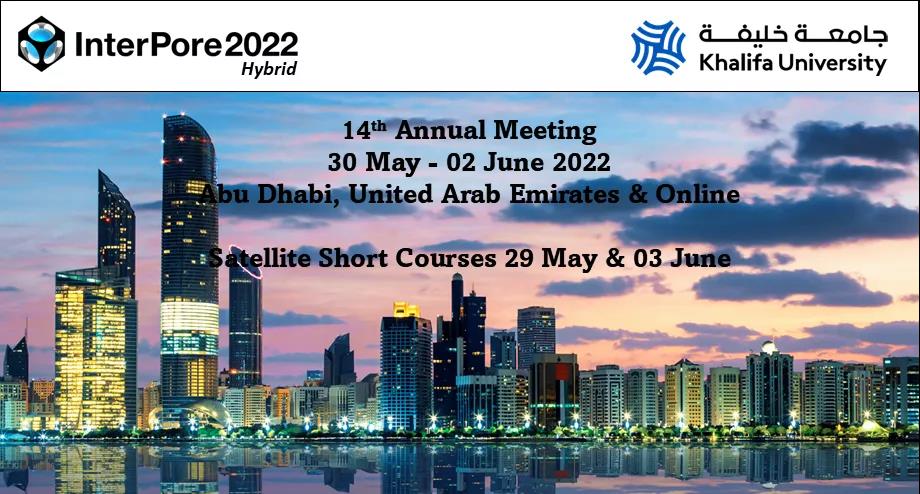Cross-scale analysis on shale oil initiation in nanopores: Insights into threshold pressure gradient
Abstract view|349|times PDF download|130|times
Abstract
The low permeability of shale matrices necessitates overcoming a threshold pressure gradient to initiate hydrocarbon flow, which poses a major constraint on recovery efficiency. However, the microscopic mechanisms underlying the threshold pressure gradient, particularly the roles of interfacial interactions and pore confinement, remain unclear. A comprehensive understanding of the threshold pressure gradient is essential for enhancing recovery strategies and improving shale oil extraction efficiency. This study provides a comprehensive analysis of the interfacial and size effects on the threshold pressure gradient within kerogen, quartz, and portlandite pores using molecular dynamics simulations. A method for assessing molecular thermal motion and quantifying the threshold pressure gradient was developed using molecular dynamics simulations. The results indicate that the threshold pressure gradient decreases in the order of kerogen, quartz, and portlandite pores. The adsorption characteristics of shale oil components at the interface were clarified through density distribution and molecular behavior analysis, and the factors contributing to the threshold pressure gradient were identified. It was found that the threshold pressure gradient is significantly influenced by the strength of interfacial interactions between the polar shale oil components and the solid matrix. Additionally, an analytical model was proposed to predict the correlation between the threshold pressure gradient and the pore size, which can extend the prediction of the threshold pressure gradient to a larger scale of thousands of nanometers. These findings offer insights into shale oil recoverability in nanopores and provide theoretical guidance for its extraction.
Document Type: Original article
Cited as: Cui, F., Meng, S., Jin, X., Qian, J., Liu, H., Wu, H., Wang, F. Cross-scale analysis on shale oil initiation in nanopores: Insights into threshold pressure gradient. Advances in Geo-Energy Research, 2025, 16(2): 131-142. https://doi.org/10.46690/ager.2025.05.05
Keywords
Full Text:
PDFReferences
Alamri, S. Z., Ellahi, R., Shehzad, N., et al. Convective radiative plane Poiseuille flow of nanofluid through porous medium with slip: An application of Stefan blowing. Journal of Molecular Liquids, 2019, 273: 292-304.
Alipour, P., Toghraie, D., Karimipour, A. Modeling different structures in perturbed Poiseuille flow in a nanochannel by using of molecular dynamics simulation: Study the equilibrium. Physica A: Statistical Mechanics and its Applications, 2019, 515: 13-30.
Cai, J., Jiao, X., Wang, H., et al. Multiphase fluid-rock interactions and flow behaviors in shale nanopores: A comprehensive review. Earth-Science Reviews, 2024, 257: 104884.
Cui, F., Jin, X., Liu, H., et al. Molecular modeling on Gulong shale oil and wettability of reservoir matrix. Capillarity, 2022, 5(4): 65-74.
Cygan, R. T., Liang, J. J., Kalinichev, A. G. Molecular models of hydroxide, oxyhydroxide, and clay phases and the development of a general force field. Journal of Physical Chemistry B, 2004, 108(4): 1255-1266.
Dou, H., Ma, S., Zou, C., et al. Threshold pressure gradient of fluid flow through multi-porous media in low and extra-low permeability reservoirs. Science China Earth Sciences, 2014, 57: 2808-2818.
Fan, J., Fan, J., Hong, X., et al. Exploring wettability variations on minerals surfaces: Insights from spreading coefficient and interaction energy analysis. Geoenergy Science and Engineering, 2024, 234: 212672.
Gao, Y., Wu, K., Chen, Z., et al. Effect of wetting hysteresis on fluid flow in shale oil reservoirs. Energy & Fuels, 2021, 35(15): 12075-12082.
He, W., Meng, Q., Feng Z. et al. In-situ accumulation theory and exploration & development practice of Gulong shale oil in Songliao Basin. Acta Petrolei Sinica, 2022, 43(1): 1-14. (in Chinese)
Hong, X., Xu, H., Yu, H., et al. Molecular understanding on migration and recovery of shale gas/oil mixture through a pore throat. Energy & Fuels, 2022, 37(1): 310-318.
Jang, S., Hwang, E., Cho, J. H. Graphene nano-floating gate transistor memory on plastic. Nanoscale, 2014, 6(24): 15286-15292.
Kavokine, N., Netz, R. R., Bocquet, L. Fluids at the nanoscale: From continuum to subcontinuum transport. Annual Review of Fluid Mechanics, 2021, 53(1): 377-410.
Kelkar, M. S., Rafferty, J. L., Maginn, E. J., et al. Prediction of viscosities and vapor-liquid equilibria for five polyhydric alcohols by molecular simulation. Fluid Phase Equilibria, 2007, 260(2): 218-231.
Klazly, M., Mahabaleshwar, U. S., Bognár, G. Comparison of single-phase Newtonian and non-Newtonian nanofluid and two-phase models for convective heat transfer of nanofluid flow in backward-facing step. Journal of Molecular Liquids, 2022, 361: 119607.
Li, D., Zha, W., Liu, S., et al. Pressure transient analysis of low permeability reservoir with pseudo threshold pressure gradient. Journal of Petroleum Science and Engineering, 2016, 147: 308-316.
Lipscomb, G., Denn, M. Flow of Bingham fluids in complex geometries. Journal of Non-Newtonian fluid mechanics, 1984, 14: 337-346.
Liu, J., Yang, Y., Sun, S., et al. Flow behaviors of shale oil in kerogen slit by molecular dynamics simulation. Chemical Engineering Journal, 2022, 434: 134682.
Liu, P., Zhao, F., Zhang, J., et al. Micro/nano flow chemistry by beyond limits manufacturing. Chinese Chemical Letters, 2024, 35(5): 109020.
Liu, Q., Wu, K., Li, X., et al. Effect of displacement pressure on oil-water relative permeability for extra-low-permeability reservoirs. ACS Omega, 2021, 6(4): 2749- 2758.
Luo, Y., Xiao, H., Liu, X., et al. Occurrence characteristics and influential factors of movable oil in nano-pores by molecular dynamics simulation. Colloids and Surfaces A: Physicochemical and Engineering Aspects, 2022, 655: 130320.
Nesterova, I. S., Gerke, K. M. Simulations of nanoscale gas flow with Knudsen diffusion and slip flow. Mathematical Models and Computer Simulations, 2021, 13: 971-978.
Papanikolaou, M., Frank, M., Drikakis, D. Nanoflow over a fractal surface. Physics of Fluids, 2016, 28(8): 082001.
Plimpton, S. Fast parallel algorithms for short-range molecular dynamics. Journal of Computational Physics, 1995, 117(1): 1-19.
Qian, J., Wu, H., Wang, F. Molecular geometry effect on gas transport through nanochannels: Beyond Knudsen theory. Applied Surface Science, 2023, 611: 155613.
Qi, Z., Wang, Y., He, H., et al. Wettability alteration of the quartz surface in the presence of metal cations. Energy & Fuels, 2013, 27(12): 7354-7359.
Ren, S., Shen, F., Yang, S., et al. Analysis and calculation of threshold pressure gradient based on capillary bundle. Mathematical Problems in Engineering, 2021, 2021(1): 5559131.
Rodrigues, H. T., Pereyra, E., Sarica, C. Pressure effects on low-liquid-loading oil/gas flow in slightly upward inclined pipes: Flow pattern, pressure gradient, and liquid holdup. SPE Journal, 2019, 24(5): 2221-2238.
Shahbabaei, M., Kim, D. Advances in nanofluidics for water purification and filtration: Molecular dynamics (MD) perspective. Environmental Science: Nano, 2021, 8(8): 2120-2151.
Siu, S. W., Pluhackova, K., Böckmann, R. A. Optimization of the OPLS-AA force field for long hydrocarbons. Journal of Chemical Theory and Computation, 2012, 8(4): 1459-1470.
Su, H. A flow model reflecting dynamic kick-off pressure gradient for low permeability reservoirs. Journal of Southwest Petroleum University (Science & Technology Edition), 2015, 37(6): 105-111. (in Chinese)
Sun, S., Liang, S., Liu, Y., et al. A review on shale oil and gas characteristics and molecular dynamics simulation for the fluid behavior in shale pore. Journal of Molecular Liquids, 2023, 376: 121507.
Sutera, S. P., Skalak, R. The history of Poiseuille’s law. Annual Review of Fluid Mechanics, 1993, 25: 1-20.
Tomy, A. M., Dadzie, S. K. Diffusion-slip boundary conditions for isothermal flows in micro-and nano-channels. Micromachines, 2022, 13(9): 1425.
Wang, F., Zhao, Y. Slip boundary conditions based on molecular kinetic theory: The critical shear stress and the energy dissipation at the liquid-solid interface. Soft Matter, 2011, 7(18): 8628-8634.
Wang, H., Wang, J., Wang, X., et al. Multi-scale insights on the threshold pressure gradient in low-permeability porous media. Symmetry, 2020, 12(3): 364.
Wang, L., Tang, H., Lv, D., et al. An experimental study of threshold pressure gradient in low permeability reservoir. Petroleum Geology and Recovery Efficiency, 2011, 18: 97-100. (in Chinese)
Wang, S., Liang, Y., Feng, Q., et al. Sticky layers affect oil transport through the nanopores of realistic shale kerogen. Fuel, 2022, 310: 122480.
Wang, W., Xu, J., Zhan, S., et al. Multi-component oil-water two phase flow in quartz and kerogen nanopores: A molecular dynamics study. Fuel, 2024, 362: 130869.
Wu, T., Pan, Z., Liu, B., et al. Laboratory characterization of shale oil storage behavior: A comprehensive review. Energy & Fuels, 2021, 35(9): 7305-7318.
Xu, H., Yu, H., Fan, J., et al. Enhanced gas recovery in kerogen pyrolytic pore network: Molecular simulations and theoretical analysis. Energy & Fuels, 2021, 35(3): 2253-2267.
Yu, H., Xu, H., Fan, J., et al. Transport of shale gas in microporous/nanoporous media: Molecular to pore-scale simulations. Energy & Fuels. 2020a, 35(2): 911-943.
Yu, H., Xu, H., Xia, J., et al. Nanoconfined transport characteristic of methane in organic shale nanopores: The applicability of the continuous model. Energy & Fuels, 2020b, 34(8): 9552-9562.
Zhang, M., Zhao, P., Li, P., et al. Designing biomimic two-dimensional ionic transport channels for efficient ion sieving. ACS Nano, 2021, 15(3): 5209-5220.
Zhang, S., Shen, L., Deng, H., et al. Ultrathin membranes for separations: A new era driven by advanced nanotechnology. Advanced Materials, 2022, 34(21): 2108457.
Zhang, Y. The flow factor approach model for the fluid flow in a nano channel. International Journal of Heat and Mass Transfer, 2015, 89: 733-742.
Zhu, C., Guo, W., Li, Y., et al. Effect of occurrence states of fluid and pore structures on shale oil movability. Fuel, 2021, 288: 119847.
DOI: https://doi.org/10.46690/ager.2025.05.05
Refbacks
- There are currently no refbacks.
Copyright (c) 2025 The Author(s)

This work is licensed under a Creative Commons Attribution-NonCommercial-NoDerivatives 4.0 International License.


